Photonic Systems Integration
Laboratory
Micro-optic Solar Concentration: Planar CPV design, analysis and prototyping
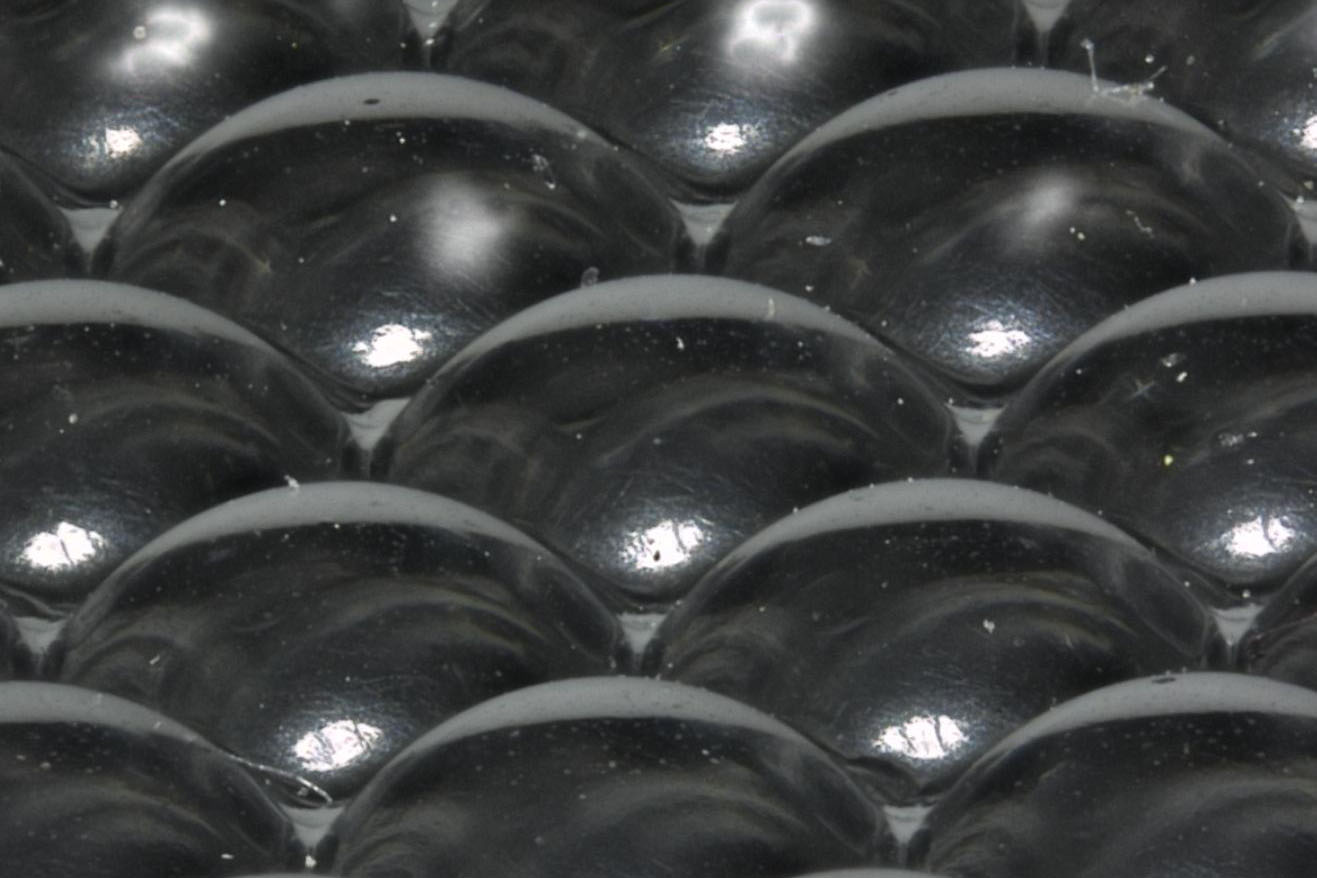
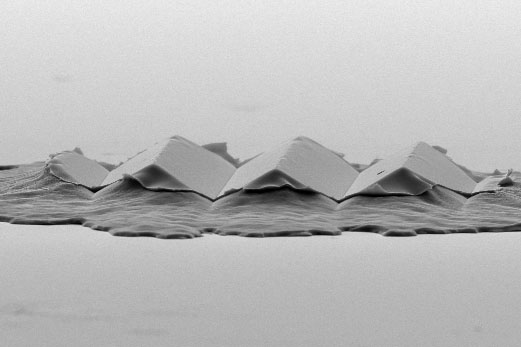
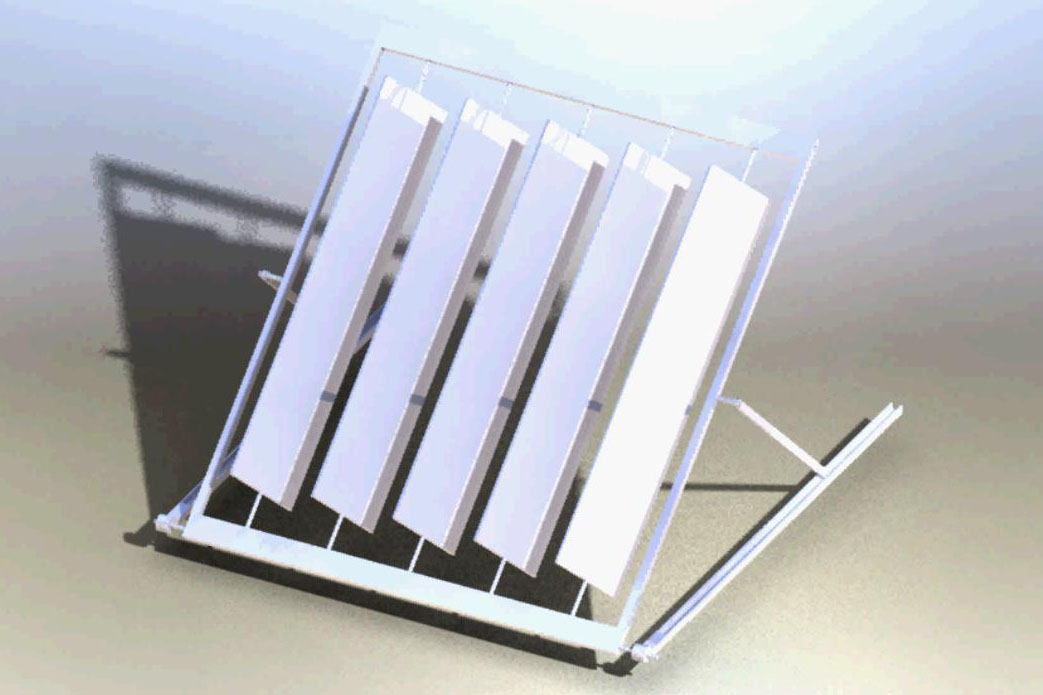
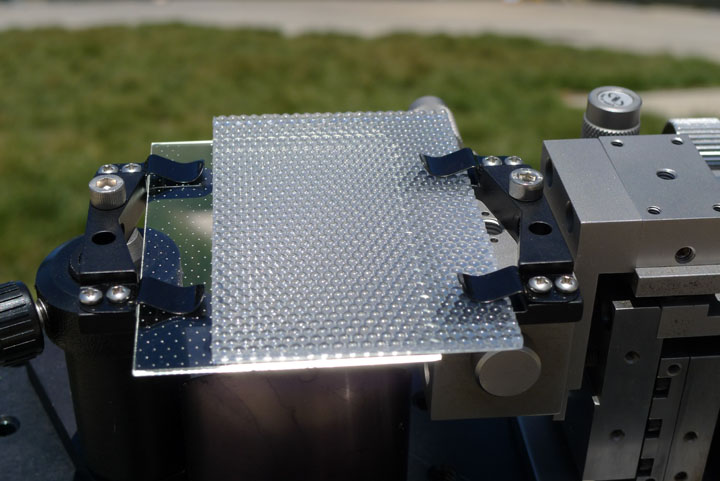
Conventional concentrator photovoltaic systems focus sunlight using a lens or mirror in conjunction with a non-imaging optic to homogenize the flux at the PV cell. Many designs mount multiple, small aperture lenses onto a shared tracking platform, each concentrating light onto its associated PV cell. Achieving a thin optical system is preferred to minimize the system payload for tracking and wind-force loading. Simply segmenting the system aperture results in a large quantity of individual cells, each needing to be packaged, aligned, and electrically connected.
Micro-optic solar concentration realizes the planar geometry by incorporating a thin lens array with a multimode slab waveguide. Light from each lens element is coupled into a common waveguide and directed towards a single PV cell. The key enabler is the placement of localized coupling mechanisms at the focus of each lens element. Light from entire lens array is tilted past the critical angle of the slab and guides by total internal reflection. This configuration opens a new design space for high-efficiency CPV systems with the potential for cost reduction in both optics and tracking mechanics. Simulations of the design achieve >80% optical efficiency at 300x concentration in flux.
Coupler placement raises a significant alignment concern between the waveguide and lens focus. Lateral and rotational tolerances amid the optics can be extremely narrow and difficult to achieve. Our solution molds the coupling feature in SU-8 photopolymer and is cross-linked by UV exposure through the lens array. Cured regions remain part of the final device and guarantee alignment at each lens focus. We have fabricated small-scale test systems from off-the-shelf components and this self-alignment technique. The entire process is compatible with inexpensive roll-to-roll manufacture and may lead to large-aperture optics well suited for CPV applications.
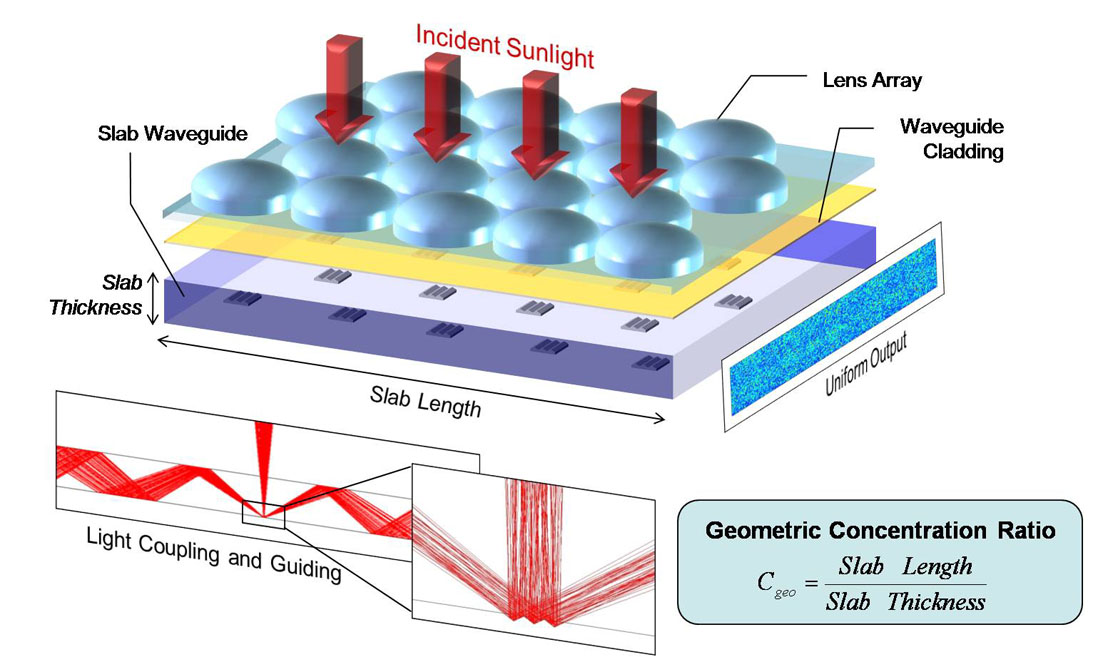
Diagram of the layers comprosing the micro-optic slab concentrator
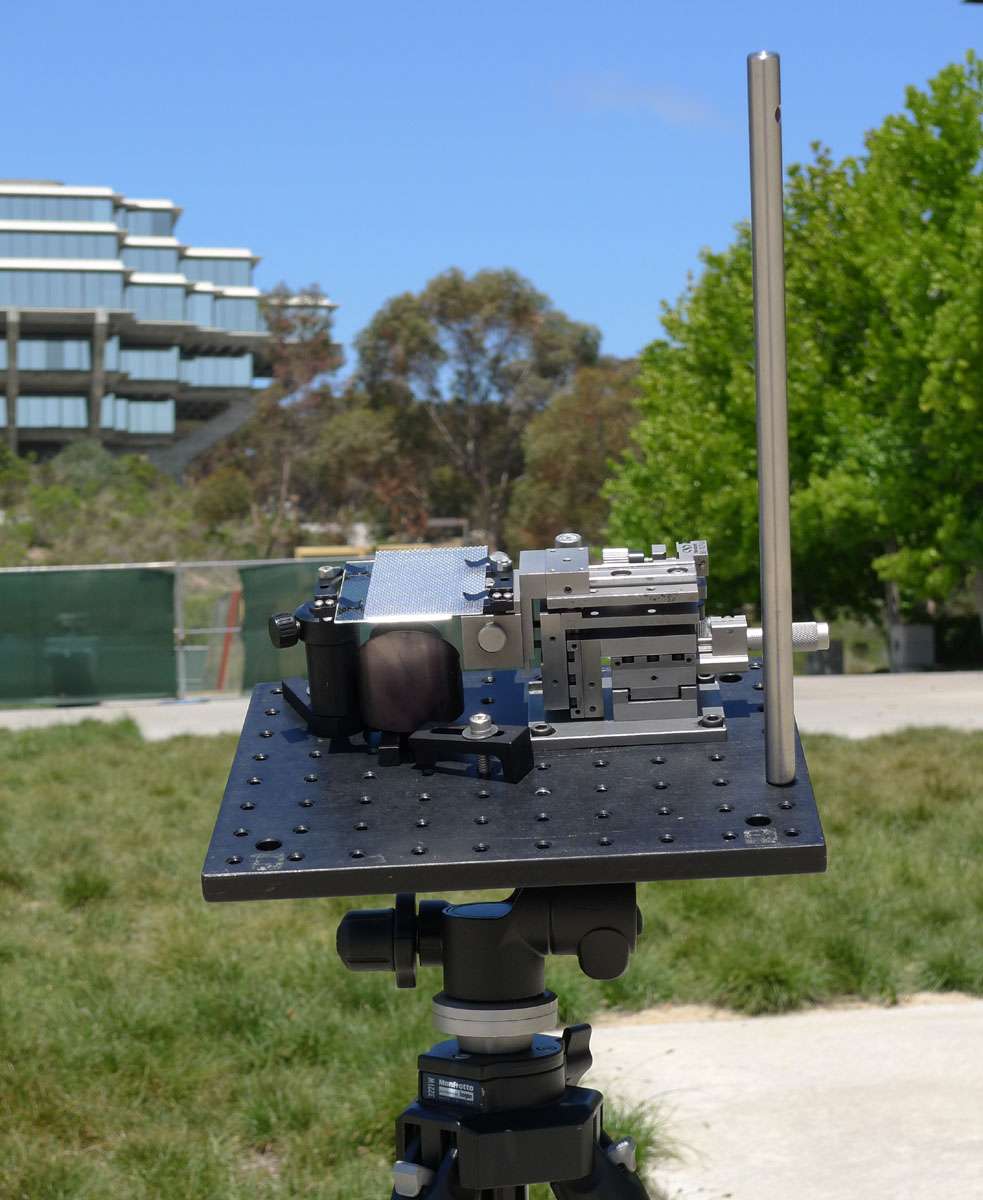
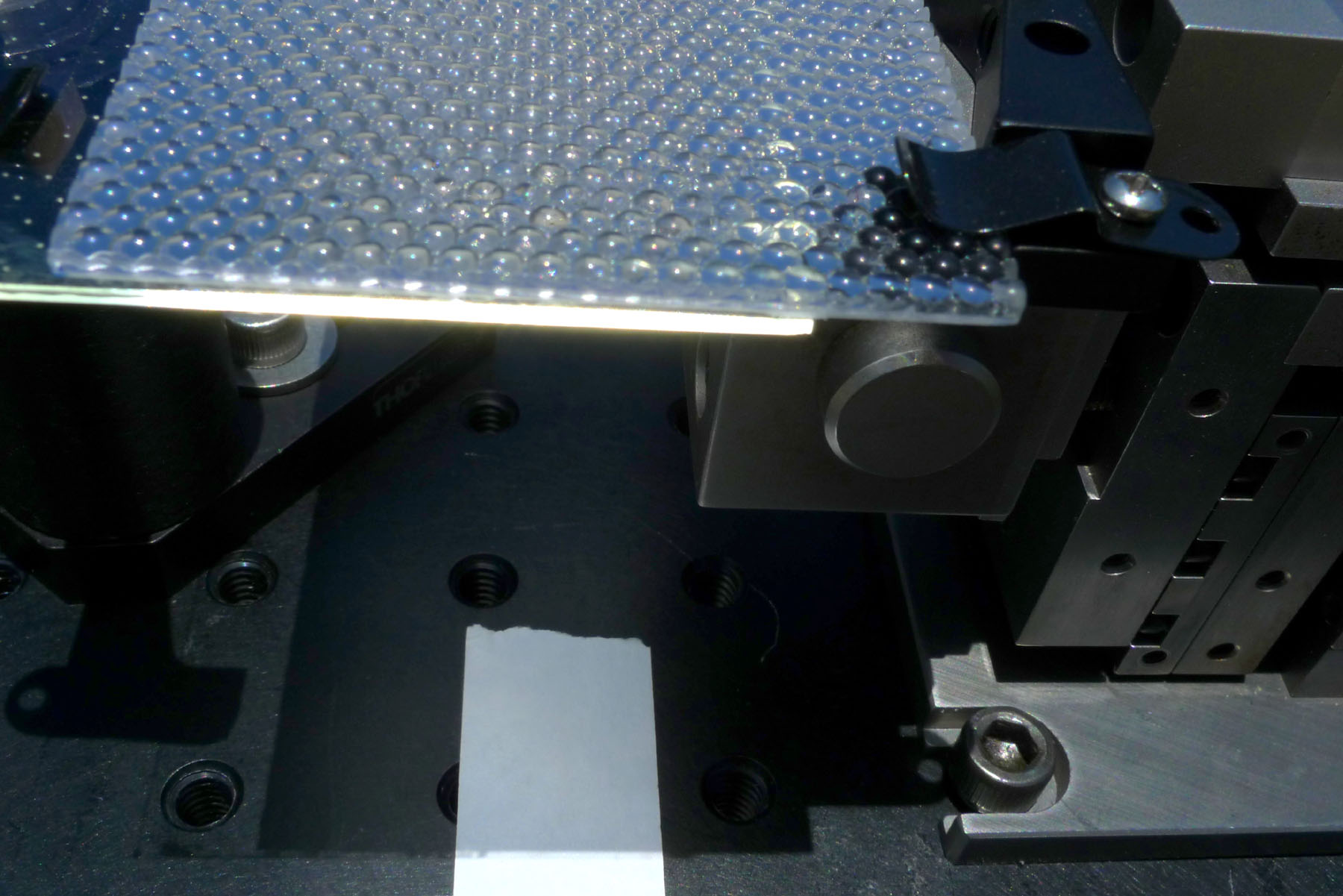
Prototype system illuminated with sunlight (left). Concentrated output exits the slab edge (right).
Journal Publication:
J. H. Karp, E. J. Tremblay and J. E. Ford, “Planar micro-optic solar concentrator,” Optics Express, Vol. 18, Issue 2, 1122-1133 (2010).
J. H. Karp, E. J. Tremblay, J. M. Hallas and J. E. Ford, "Orthogonal and secondary concentration in planar micro-optic solar collectors," Optics Express, Vol. 19, Issue S4, A673-A685 (2011).
Conference Proceedings:
J. H. Karp, E. J. Tremblay and J. E Ford, "Micro-Optic Solar Concentration and Next-Generation Prototypes," IEEE Photovoltaics Specialists Concerence (2010). For presentation, click here.
J. H. Karp, E. J. Tremblay and J. E Ford, "Radial Coupling Method for Orthogonal Concentration within Planar Micro-Optic Solar Collectors," Optics for Solar Energy, OSA, STuD2 (2010). For presentation, click here.
J. H. Karp, E. J. Tremblay and J. E. Ford, “Planar micro-optic concentration using multiple imaging lenses into a common slab waveguide,” Proc. SPIE 7407, 7407-11 (2009). For presentation, click here.